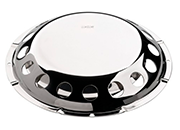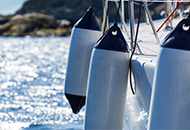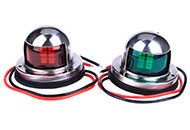
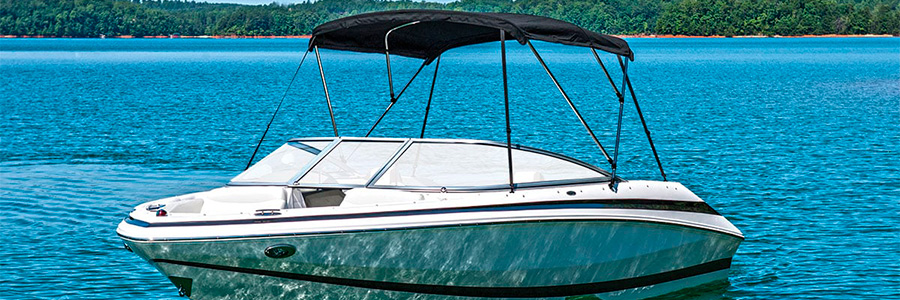
Step 1: Determining the Mounting Location
Selecting the perfect mounting location for your Bimini top is the foundational step that influences all subsequent measurements and the effectiveness of your Bimini top. This choice directly impacts how well the top will serve its purpose of providing shade and protection, ensuring it complements your boat's functionality and aesthetic appeal.
After selecting the optimal mounting location for your Bimini top, the next step involves detailed planning and measuring to ensure it perfectly fits your boat’s specific dimensions and needs. Start by measuring the distance between the main mounting points—usually found port to starboard—this measurement will help you determine the width of the Bimini top required. For the length, measure from bow to stern, noting the midpoint to align the center of the Bimini top accurately, ensuring balanced coverage.
Further, you will need to decide on the height of the Bimini top. Stand inside your boat and measure from the mounting points to the desired overhead position to ensure ample headroom is available for comfort and practicality. When considering the type of Bimini top, choose between a standard bimini, which is common for most pleasure crafts, and a tower bimini, typically reserved for larger vessels or those with wakeboarding features.
Lastly, always double-check these measurements to confirm that the Bimini top will not only fit but also function as intended without obstructing views or interfering with the boat's operation. This careful planning will ensure your new Bimini top enhances your boating experience, providing both shade and an aesthetic complement to your vessel’s overall design.
Key Considerations for Mounting Location
- Boat Activities: Reflect on how you use your boat. Are you fishing, entertaining guests, or lounging? The Bimini top should enhance your boating activities, not hinder them.
- Space Usage: Think about the most frequented areas on your boat. The Bimini should cover these areas to maximize comfort for you and your guests. Consider the seating arrangement and the helm station to ensure everyone benefits from the shade.
- Obstacle Avoidance: Before deciding on a location, inspect your boat for potential obstacles such as antennas, ski pylons, or wakeboard towers. The Bimini top should not interfere with these elements.
- Boat Structure: The mounting location should be structurally sound to support the Bimini top. This often means mounting to a flat surface where the Bimini's hardware can be securely fastened.
- Visibility: Ensure that the placement of the Bimini top does not obstruct the captain's view. Safety is paramount, and maintaining an unobstructed line of sight in all directions is crucial for navigating and spotting other vessels or obstacles.
Practical Steps:
- Visual Inspection: Conduct a thorough visual inspection of your boat to identify possible mounting locations. Pay special attention to the layout and any fixed or movable objects that could influence the Bimini top's placement.
- Mock Placement: Using temporary markers or tape, outline potential mounting points on your boat. This visual aid will help you better understand how the Bimini top will integrate with your boat's design and functionality.
- Consultation: Consider consulting with fellow boaters or professionals. Feedback from experienced individuals can offer valuable insights into the optimal placement for your Bimini top, especially if they are familiar with your boat model or type.
- Adjustments: Be prepared to make adjustments. Sometimes, the ideal location on paper may not translate perfectly in reality. Flexibility and willingness to adjust your plans will ensure the best possible outcome.
Determining the mounting location is a critical step that sets the stage for a successful Bimini top installation. It requires careful consideration of your boat's layout, activities, and potential obstacles. By thoughtfully selecting the mounting location, you'll ensure your Bimini top enhances your boating experience, providing the desired comfort and protection for many outings to come.
Positioning the Bimini strategically to enhance its effectiveness means evaluating the boat’s typical use cases. For instance, if the boat is often used for leisure where passengers may prefer less direct sunlight, positioning the Bimini to provide more comprehensive shade can enhance comfort. Find the midpoint along the length of the area you want covered, ensuring it aligns with key features like seating or activity areas. This will ensure that the Bimini top serves its purpose without interfering with the vessel's functionality or access to essential controls and equipment.
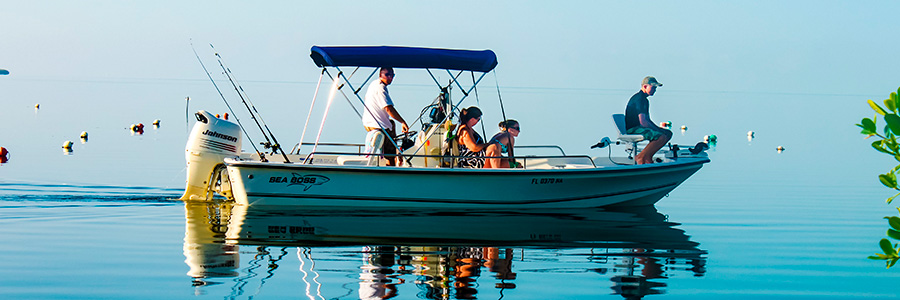
Step 2: Understanding Bimini Bows
When it comes to outfitting your boat with a Bimini top, grasping the concept of Bimini bows is crucial. Bows are the framework's horizontal supports that span the width of your boat, providing the structure for the Bimini top fabric. The number of bows directly affects the Bimini's size, shape, and the area it covers.
Types of Bimini Bows
- 2 Bow Bimini Tops: These are the simplest form, consisting of two bows. They are typically suited for smaller boats like Jon boats, inflatables, or small fishing boats. The 2 bow Bimini offers essential sun protection without overwhelming the boat’s size and aesthetics.
- 3 Bow Bimini Tops: The most common variety, three bows, support these Bimini tops. They're versatile, fitting a broad range of medium-sized boats such as V-hull runabouts, ski boats, and center consoles. This style balances substantial coverage with maintaining an open feel on the boat.
- 4 Bow Bimini Tops: Designed for the largest boats, such as pontoons or deck boats, 4 bow Bimini tops offer maximum coverage and protection. They're ideal for boats where entertaining, fishing, or lounging occurs over extended areas.
Selecting the Right Number of Bows
- Consider Your Boat’s Size: The length and width of your boat are key factors. Generally, larger boats require more bows for adequate support and coverage. The goal is to ensure the Bimini top spans effectively across the necessary areas without compromising stability or aesthetic harmony.
- Assess Coverage Needs: Think about how much of your boat you want shaded. If you’re looking to cover a larger area for guests or equipment protection, leaning towards a Bimini top with more bows might be beneficial. For minimal shade and less obstruction, a 2 or 3 bow top could suffice.
- Understand the Impact on Maneuverability and Accessibility: More bows mean a more extensive structure that could potentially limit movement around the boat. It’s crucial to balance the desire for shade with the practicality of boat use.
- Installation Space: More bows require more mounting points. Ensure your boat has enough space on the gunwale or rails to accommodate the necessary mounts without interfering with other equipment or activities.
Practical Tips
- Visualize Before Deciding: If possible, look at similar boats with Bimini tops installed. This can give you a better sense of how different bow configurations look and function in practice.
- Consult with Professionals or Manufacturers: Leverage the expertise of Bimini top manufacturers or marine professionals. They can provide valuable advice on the most appropriate bow configuration for your boat type and intended use.
- Consider Future Use: Think about how your boating habits might evolve. A Bimini top is a significant investment, so choosing a configuration that can accommodate potential changes in how you use your boat is wise.
Additionally, consider the placement of the Bimini relative to critical navigational areas; you'll want to ensure it does not obstruct essential views or interfere with operation. The midpoint of the boat is often used as a reference for centering the Bimini top, ensuring balanced coverage from bow to stern, which is especially important for maintaining boat stability and aesthetic symmetry. Email consultations with manufacturers or using clamps to temporarily set the Bimini can help visualize the setup before finalizing the installation. This step is crucial to ensure that the Bimini does not get stuck or impose limitations on movement around the boat, providing shade where needed while preserving the boat’s functionality and ease of use.
Understanding the function and implications of Bimini bows is essential for selecting the right Bimini top for your boat. By carefully considering your boat's size, desired coverage area, and practical usage needs, you can choose the ideal bow configuration that balances functionality with aesthetics, ensuring you enjoy your time on the water under the comfort of adequate shade and protection.
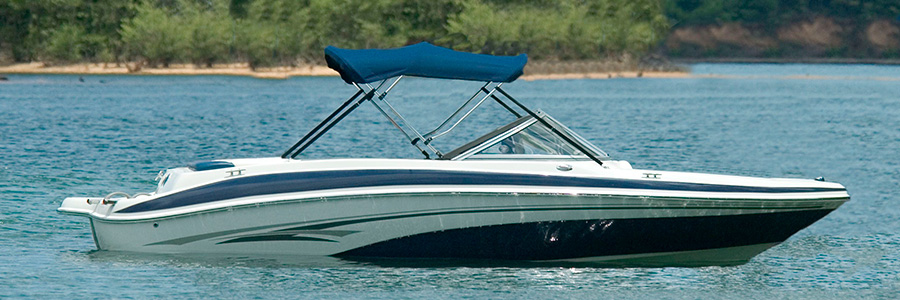
Step 3: Dimension Measuring Width
Selecting the perfect Bimini top for your boat begins with an accurate measurement of width, which is arguably the most critical dimension in ensuring a snug and aesthetically pleasing fit. The width of a Bimini top is determined by the distance between the points on your boat where the Bimini will be mounted.
The Process of Measuring Width
- Identify Mounting Points: Before anything else, decide precisely where on your boat the Bimini top will be mounted. This is usually on the gunwale or the side rails of your boat. The chosen points should offer a stable and secure base for the Bimini top and not interfere with the boat's operation or other mounted equipment.
- Measure Across: Using a tape measure, calculate the distance between the identified mounting points on either side of the boat. Ensure the tape measure is stretched straight across the boat, maintaining a level line. It's crucial to avoid measuring up and over or around any obstacles that might give a falsely elongated measure.
- Accuracy Matters: Precision in this step cannot be overstated. Even a small miscalculation can lead to a Bimini top that does not fit correctly, compromising both function and form. If your measurements fall between standard sizes, always round up to ensure adequate coverage.
Tips for Accurate Measurement
- Double-Check: Always measure twice to ensure accuracy. Mistakes in this step can be costly and frustrating to rectify.
- Consider Obstacles: Be mindful of anything that might impact the placement and spread of the Bimini top, such as fishing rod holders, lighting fixtures, or ski pylons. These should influence not just the width but also the positioning of your Bimini top.
- Use Helpers: Measuring the width of your boat for a Bimini top can sometimes require more than two hands. Having a helper can ensure the tape measure is straight, level, and accurate across the span of the boat.
- Consult With Professionals: If you're unsure about your measurements or how to account for specific variables on your boat, don't hesitate to consult with a professional. Many Bimini top manufacturers and marine outfitters offer support to help you select the right size.
With the width accurately measured, you can now match your dimensions to the specifications provided by Bimini top manufacturers. Most Biminis are offered in several width ranges to accommodate various boat sizes. Selecting a Bimini top that falls within your measured width range will ensure a proper fit and optimal performance.
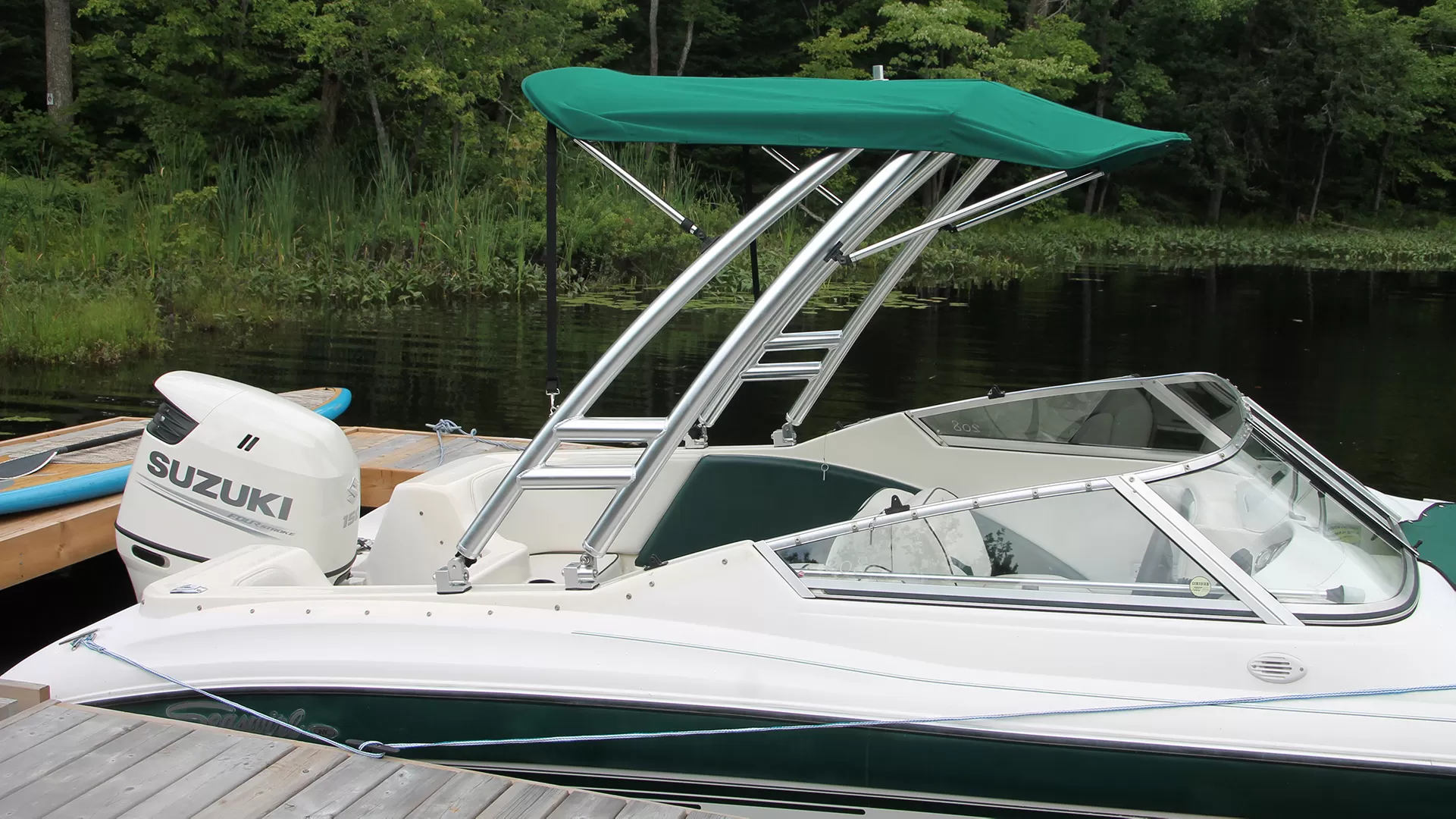
Combined Width and Length Measurement Steps
Combining the basic steps of measuring width and length to install a Bimini top simplifies the process, ensuring that you choose the perfect top for your boat. Here's how to efficiently take these important measurements.
1. Determine Attachment Points and Desired Coverage
- Attachment Points: Start by identifying the locations on your boat where you want to mount the Bimini top. These points should provide stable support and not interfere with boat handling or other installed equipment.
- Coverage Area: Decide which parts of the boat you want the Bimini to cover, such as seating areas or the helm, to determine the length needed for adequate protection.
2. Measurement of Width and Length
- Width Measurement: Measure the distance between the left and right attachment points directly across the side of the boat. Make sure the measure is level and straight, avoiding any obstructions.
- Length Measurement: Measure from front to back of the desired coverage area. The top of the Bimini will extend equally from both in front and behind the anchor point, so a 6-foot-long Bimini will provide 3 feet of coverage both in front and behind the anchor point.
3. Ensuring Accuracy
- Double Check Measurements: Accuracy is paramount. Double check measurements to confirm dimensions, especially width, as it directly affects the fit of the Bimini top.
- Consultation: If you are unsure, consult with us to gain clarity and ensure correct sizing.
4. Selection Based on Measurements
- Width and Length Matching: Using accurate measurements, select a Bimini top that matches the specified dimensions in width and length. This will ensure optimal coverage and stability.
Tips for Success
- Use Helpers: Accurate measurements often require more than two hands. Assistants ensure straight, level measurements.
- Visualize with Aids: Use ropes or strings to simulate the boundaries of the Bimini top, helping to visualize the coverage area.
- Flexibility and Experimentation: Explore different attachment points to adjust the length and coverage area, customizing the Bimini top to your specific needs.
Position the Bimini to ensure it offers the right amount of shade while allowing for comfortable movement around the boat.
For instance, if engaging in activities that require frequent standing, ensure the Bimini is mounted high enough to accommodate this without causing obstructions. Conversely, if the primary use is relaxed seating or lounging, a slightly lower placement might be more beneficial to maximize shade coverage. It’s also beneficial to establish the overhead position of the Bimini—calculate the desired height from the mounting point up to the underside of the Bimini. This measurement is crucial for ensuring the Bimini provides sufficient headroom while also maintaining an aesthetically pleasing line and functionality. Commonly, the midpoint or the centerline of the boat is used to set this height, aligning with both the port and starboard sides for a symmetrical setup. This balanced approach ensures the Bimini top does not skew or tilt, providing uniform shade and a pleasing appearance.
By combining the steps of measuring width and length, you will create a streamlined approach to selecting your Bimini top. This method not only ensures visual appeal and functionality but also maximizes comfort, protection, and boating enjoyment. Remember, the right Bimini top transforms your boating adventures by offering shelter from the elements for you and your guests.
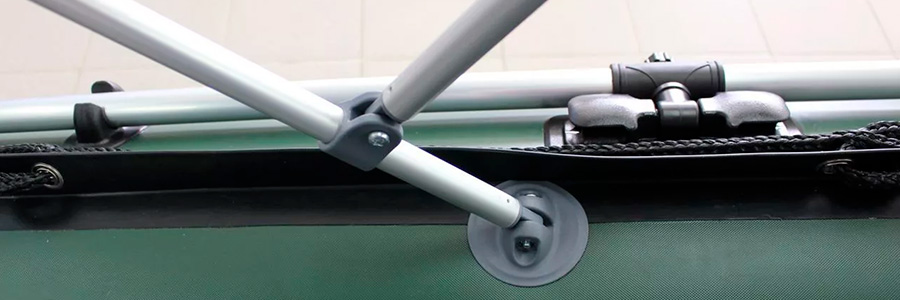
Step 4: Measuring Height for Your Bimini Top
The height of your Bimini top is a critical measurement that influences the overall usability and comfort provided by the top. It determines the clearance underneath, affecting how you and your passengers move about under the cover. Here’s how to accurately measure the height for your Bimini top:
- Identify the Mounting Point: Start by confirming the exact spot where the Bimini top will be mounted on your boat. This could be on the gunwale, the side of the boat, or another appropriate location that offers stability and doesn’t interfere with the boat's normal operation.
- Measure Upward: From the mounting point, use a tape measure to extend vertically up to the desired height of the Bimini top. This is the point where the top of the Bimini will be once installed. Keep the tape measure perpendicular to the floor to ensure an accurate measurement.
- Consider Desired Clearance: Think about the activities you'll be doing under the Bimini top and the clearance needed. If you'll be standing underneath, make sure the height accommodates the tallest user comfortably. For sitting areas, consider the height of the seats and the headroom needed.
- Account for Bimini Structure: Remember, the height measurement determines the space from the mounting point to the top of the Bimini frame. However, the overall clearance underneath also includes any additional height from the boat's floor to the mounting point.
Finalizing the height also involves evaluating how the Bimini top integrates with the overall dimensions and design of the boat. For instance, if the Bimini is intended primarily to provide shade, you may opt for a height that casts the broadest possible shadow without obstructing visibility or accessibility. Conversely, if maintaining a clear line of sight is a priority, especially in boats like center consoles, the height might need to be adjusted accordingly to ensure unobstructed views for navigation.
Additionally, consider how the Bimini top's height will interact with existing structures or equipment on the boat. For boats with fishing gear, radar arches, or wakeboard towers, the height of the Bimini should complement these features without causing interference. Sometimes, installing the Bimini slightly behind the main mounting points or choosing a shorter height can prevent issues with gear accessibility or entanglement. Always verify the total vertical clearance from the boat's deck to the top of the Bimini, ensuring it aligns with the vessel’s functionality and your personal preferences for coverage and open air exposure.
The right height for your Bimini top enhances the functionality and comfort of your boat, providing adequate protection from the elements while accommodating the activities you enjoy most.
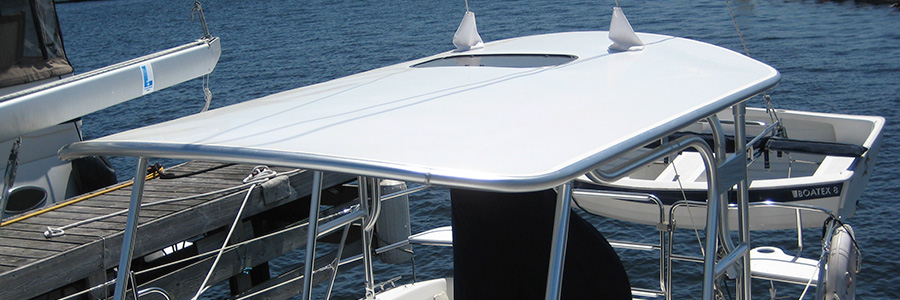
Step 5: Selecting the Right Bimini Top
Once you've navigated through the initial steps of determining the ideal mounting location, understanding the significance of Bimini bows, and meticulously measuring the width, length, and height for your Bimini top, it's time to finalize your selection.
Consider Material and Color
- Fabric Quality: Look for durable, weather-resistant materials that offer UV protection and are resistant to fading and mildew. High-quality fabrics like Sunbrella or marine-grade polyester can provide long-lasting protection and maintain their appearance over time.
- Color Choices: Select a color that complements your boat's aesthetic. Consider factors like heat absorption (darker colors absorb more heat) and visibility (brighter colors may be more visible to other vessels).
Frame Construction
- Material: Choose a frame material that offers durability and corrosion resistance, especially in marine environments. Aluminum and stainless steel are popular choices, with stainless steel offering higher strength and corrosion resistance.
- Bow Configuration: Ensure the Bimini top's bow configuration (2, 3, or 4 bows) matches your boat size and the coverage area you've determined. More bows typically provide more support for larger Bimini tops.
Bimini Top Help - Additional Features
- Storage Boot: A storage boot protects the Bimini top when it's not in use and helps keep it clean and compact. Most Bimini tops come with a storage boot, but confirm this feature before purchasing.
- Rear Support Poles: For added stability and to keep the Bimini top from resting on your boat when folded, consider a Bimini top with rear support poles.
- Warranty: Check the warranty details. A good warranty can provide peace of mind and protection for your investment.
- Compatibility with Accessories: Ensure the Bimini top is compatible with any existing or planned accessories for your boat, such as fishing rod holders, lighting, or additional shade extensions.
Additionally, when choosing the final setup for your Bimini top, consider the overall impact on your boating experience. For example, adjusting the overhead position of the Bimini can influence the amount of sun exposure and shade provided, which is crucial during long days out on the water. Positioning the Bimini slightly behind the main mounting point or adjusting the height can drastically alter both the functionality and comfort level.
It is also worthwhile to question whether the standard Bimini setup meets all your needs or if modifications are necessary. For instance, you may find through trial that a slightly higher or lower Bimini top would work best to accommodate standing or seated positions, respectively. By determining the midpoint and length runs of the Bimini, you ensure that it not only fits perfectly but also meets specific requirements for protection and usability. This careful planning ensures that your Bimini top does not just meet the minimum requirements but truly enhances your boating experience by offering the desired amount of shade without compromising on comfort or style.
Selecting the right Bimini top is a blend of practicality, personal preference, and compatibility with your boating lifestyle. By carefully considering these factors, you can enhance your boating experience with a Bimini top that offers optimal functionality, protection, and style

